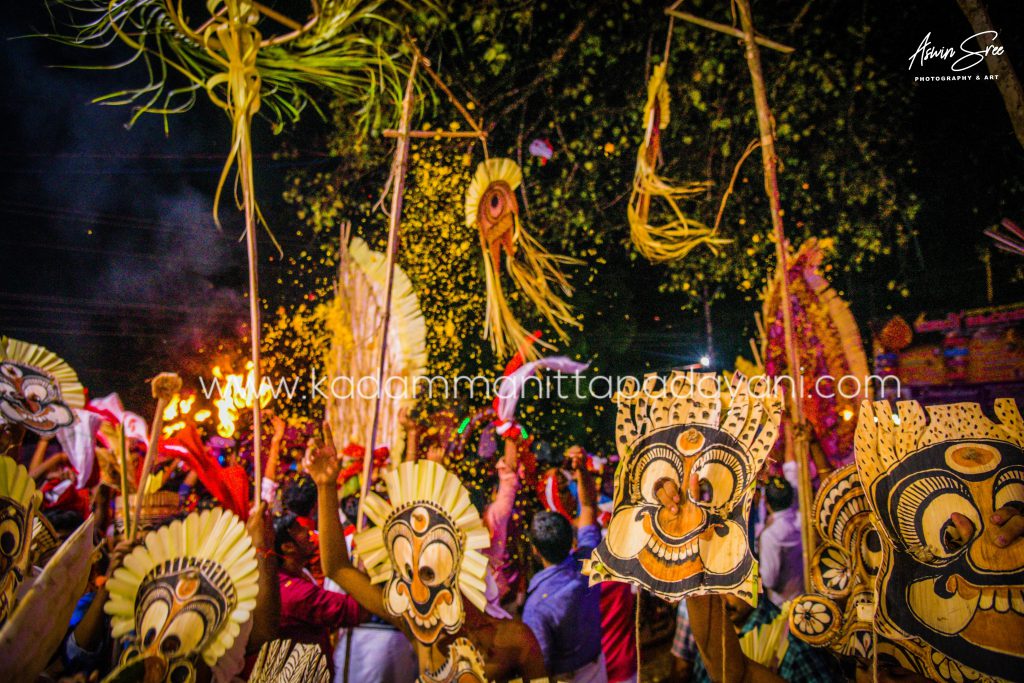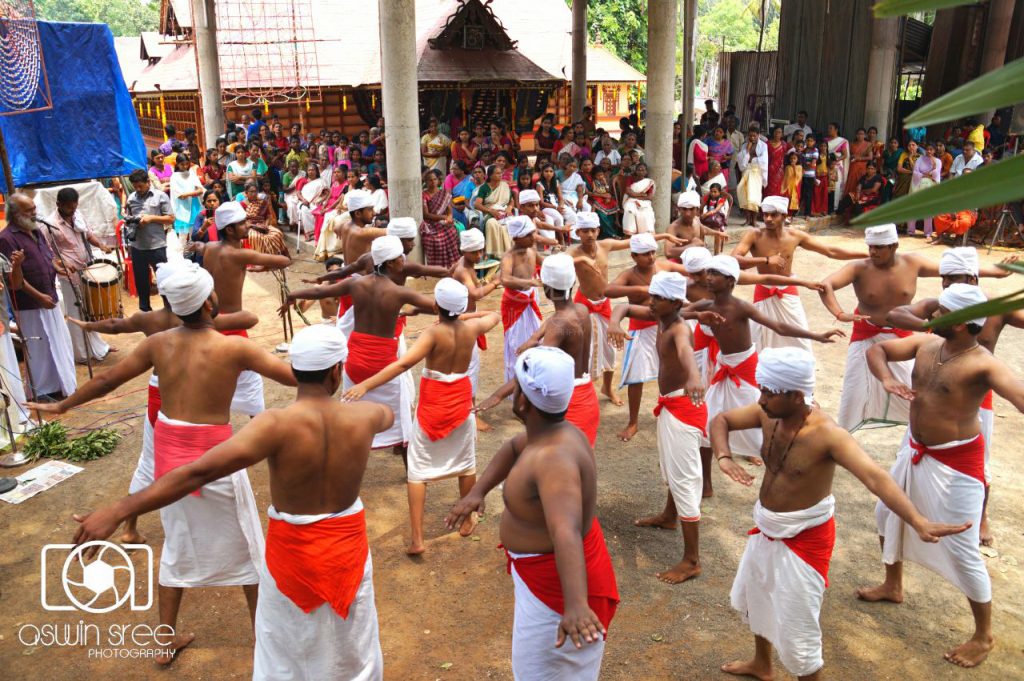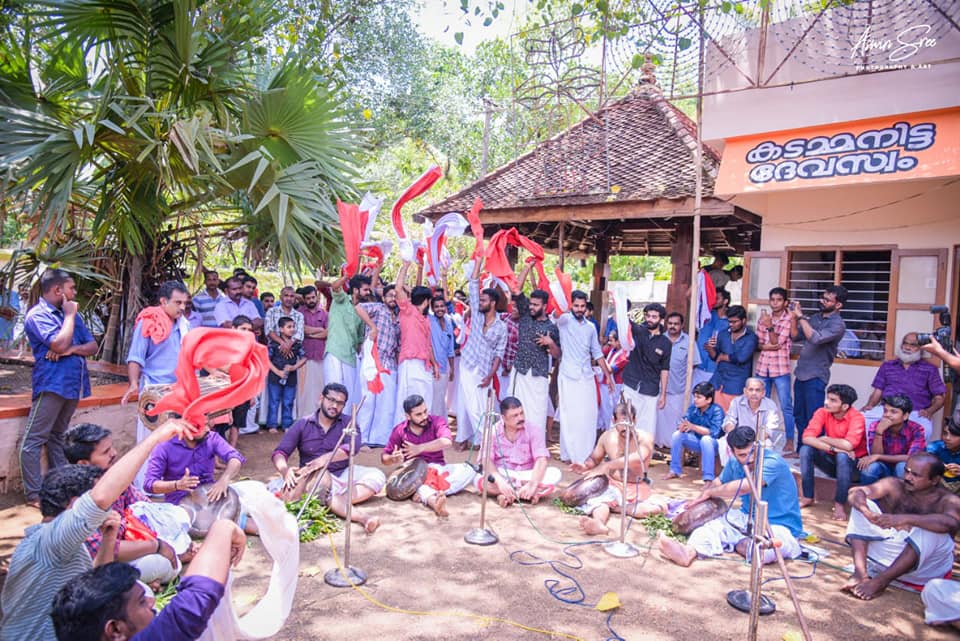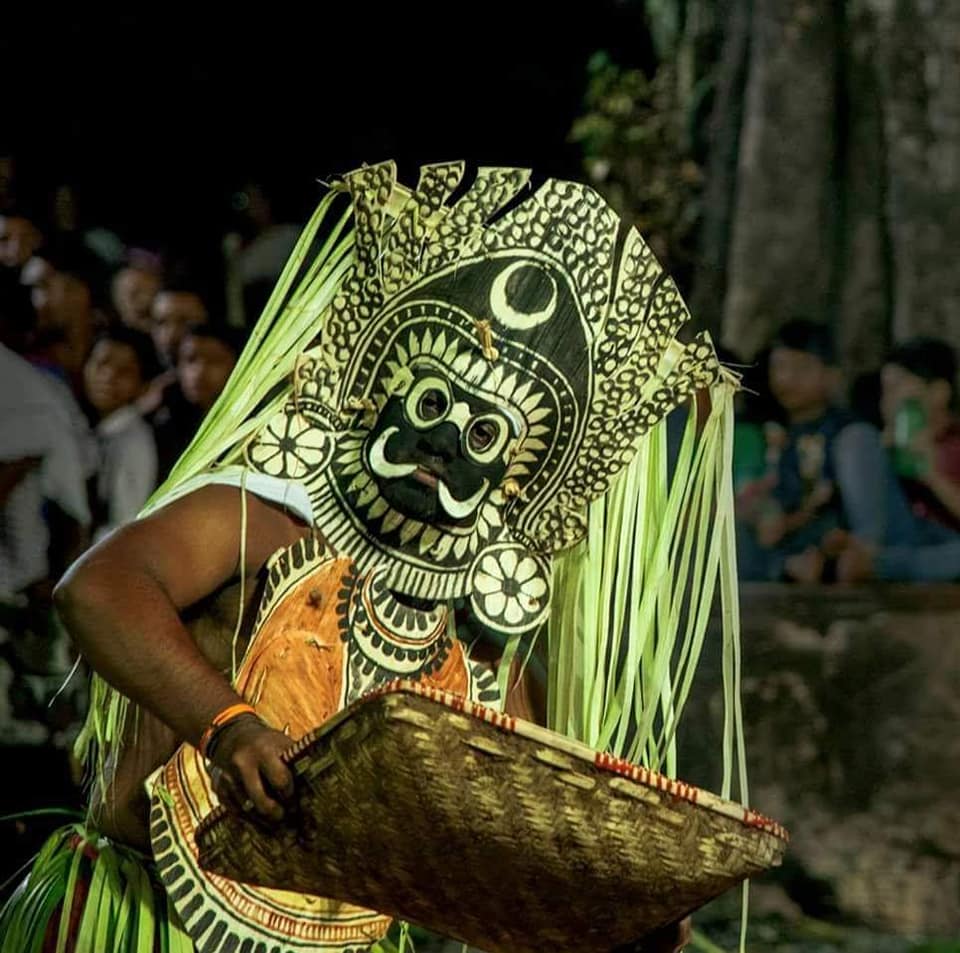
Padayani, the traditional performing art form of Kerala, to be precise, of central Travancore,is the embodiment of so many elements depicting the innate as well as the acquired, the spiritual as well as the temporal elements of societal structure of an ethnic group. The term Padayani and Pateni are equated. The word Padayani had been evolved by combining two different terms pata and ani both having more than one meaning. In one sense, pata means a group of soldiers, and ani means rows. Hence the term Padayani can be used to mean the artistic performance of soldiers standing in rows
and columns. It is this sense that tempts us to interpret Padayani as part of the martial tradition. Of course, there exists row-wise and column-wise movements in the performance, but it is not a mere martial art form. No doubt the traditional martial culture of Kerala has influenced Padayani; but it is basically a ritual, and not a martial art. In fact, it developed over centuries into a performing art with direct and indirect influences of both.

In another sense, pata means flock, offering, creation, sacrifice etc. and ani means having the quality of, bearing the ornaments or costumes etc. One of the episodes in Padayani is known by the term Pooppata which means the offering of flowers. Besides this literal meaning, Pooppata stands for a type of sorcery devoutly carried out by the lower castes as well as the upper castes to get rid of hysteria of women and to bless the married women for having children. This is an act filled with theatrical elements. This whole-hearted traditional sacrifice has nothing to do with the so called martial culture.

Further, the term Padachavan means the creator-the Almighty Lord. The term Padachoru means the rice boiled and moulded in a hemispherical shape as an offering to the deity. In all these cases, we can see that the martial culture has nothing to do with the terms Pada or Ani. Linguistically, the term Pateni may be traced to Padayani. But, Pateni has now substituted the more refined and sophisticated Padayani in the hearts and tongues of the village folk. The term Pateni imbibes the sweetness of the rustic, rural and tribal dialects, the taste of the sweat of the villagers who have identified themselves with Mother Nature, the ingenuity of the rustic conscience and the rubescence of the life blood of the untainted, farm folk. However, we need not bother whether the term is Padayani or Pateni, because in content and spirit, both are one and the same, of course with marginal but inevitable regional differences. The invocation of the deity to the main arena, the dedication of the instant artistic offerings, producing the costumes from the natural things, available
in the surroundings itself- all follow the same pattern everywhere. Whether you call it Pateni or Padayani, this traditional performance bears the common character of an exorcism, carried out bythe villagers in all piety to ward off evil forces.
